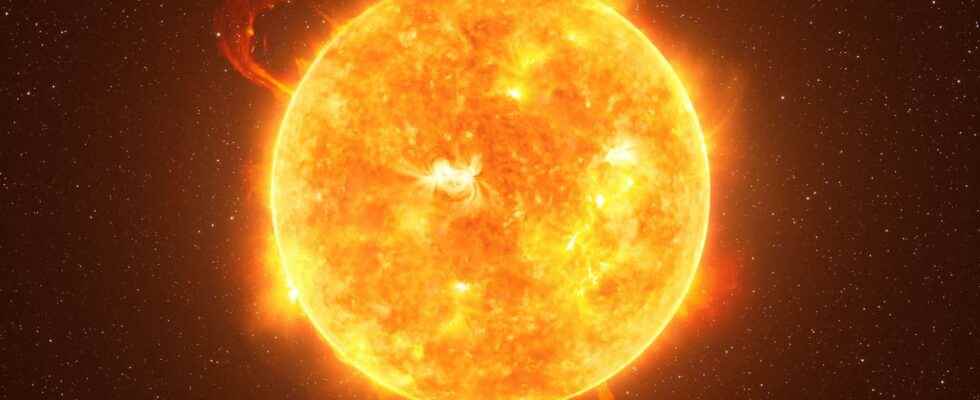The biggest solar flares appear during the most intense periods of activity of our Star. It’s known. But researchers now show that around 9,200 years ago, a major storm erupted at the very minimum of activity.
You will also be interested
[EN VIDÉO] A major solar flare filmed by NASA The sun is in perpetual activity, it houses in its heart a thermonuclear reaction which releases light and a solar wind which then strikes our planet. Sometimes it is the scene of powerful eruptions. The nuSTAR X-ray telescope was able to capture on video one of the most powerful of 2014.
Solar flares remain difficult to predict. But the astronomers agree that they occur preferentially during the most active phases of our Sun. Those during which the maximum of sunspots. However, Lund University researchers (Sweden) show today that a major eruption occurred about 9,200 years ago. A period known to have been among the least active of our Star.
When such an eruption occurs, cosmic particles tall energy reach Earth. They then produce radioactive isotopes of beryllium-10 (10Be) and chlorine-36 (36Cl). Traces of these peaks can be kept on ice or in sediment.
A risk to life on Earth
Those are carrots drilling from Greenland and Antarctica that the researchers analyzed for such spikes. A job they call “long and expensive”, but it paid off. The quantities of 10Be and of 36Cl found in ice cream carrots indicate that a storm A hitherto unknown major solar event occurred during a period of low activity of our Sun.
Researchers believe that if a solar storm of this magnitude were to strike the Earth today, the consequences would be significant. Power outages, damage to satellites, risk to air traffic and astronauts aboard the International Space Station (ISS). And even possibly a collapse of our communication systems. Hence the importance of continuing to try to better predict them and learn how to protect yourself from them.
Interested in what you just read?
